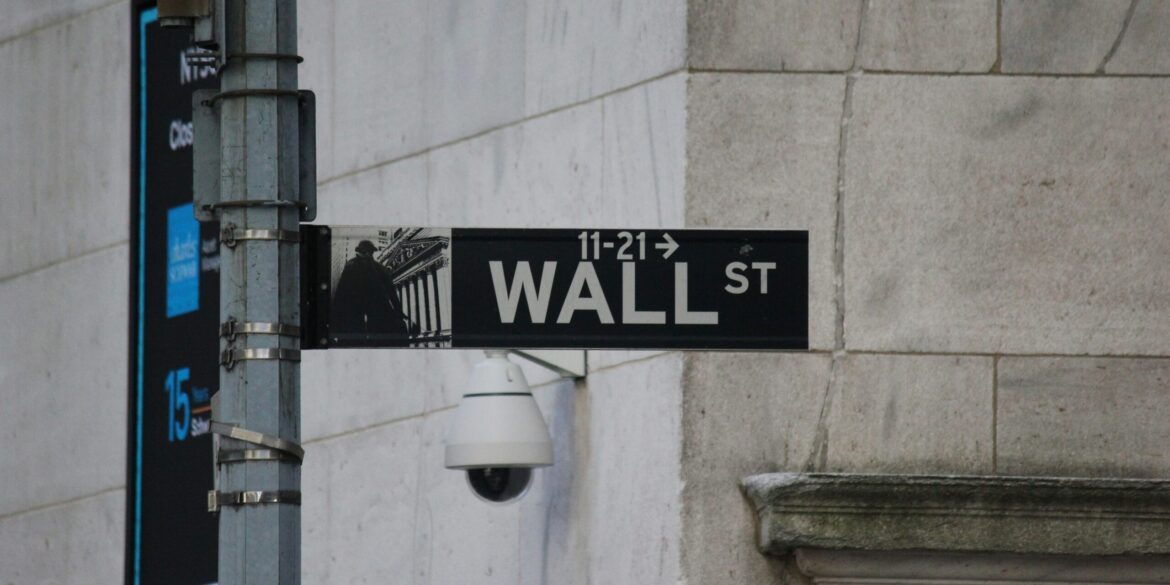U.S. stock markets closed the week on a positive note, fueled by a series of favorable economic reports, including a slight dip in inflation rates. The S&P 500 posted a 0.7% gain, signaling investor confidence that the U.S. economy could be on track for stable growth in 2025. This rally follows a period of uncertainty marked by fluctuating inflation and concerns about economic instability. With inflation showing signs of easing and key sectors performing well, Wall Street is optimistic about the year ahead, although analysts remain cautious about potential risks on the horizon.
Inflation Eases as Consumer Price Index Shows Moderate Increase
Investor optimism has been particularly bolstered by the latest inflation data, which shows a modest rise in the Consumer Price Index (CPI). In April 2025, the CPI rose by just 2.3% year-over-year, a notable decrease from earlier in the year when inflation was spiking at higher rates. This drop has provided much-needed relief to markets, as inflation had been a persistent concern over the past few years, impacting everything from consumer spending to the Federal Reserve’s monetary policy decisions.
The easing of inflation is seen as a sign that the Federal Reserve’s efforts to curb price increases through interest rate hikes are beginning to take effect. Since the inflation surge in 2021 and 2022, the Fed has implemented a series of aggressive rate increases to bring inflation back under control. While these measures have slowed economic growth, they have been effective in reducing the rate of inflation, which had previously been at multi-decade highs. The CPI’s slowdown in April reflects these efforts, and many economists are hopeful that inflation will remain under control throughout the remainder of 2025.
In particular, key areas of the economy, such as food and energy prices, which had seen significant increases in recent years, have shown signs of stabilization. Gasoline prices, which had surged due to global supply chain issues and geopolitical tensions, have dropped, and food prices have started to level off. While inflation remains a concern, the overall trend suggests that it may no longer be the major economic obstacle it was in previous years.
Positive Earnings Reports Drive Investor Confidence
Another factor contributing to Wall Street’s rally is strong earnings reports from major companies, particularly in the technology and energy sectors. Technology giants like Apple, Microsoft, and Alphabet have posted better-than-expected results, benefiting from strong consumer demand and rising investment in digital transformation and cloud computing. These companies have also capitalized on operational efficiencies, reducing costs while maintaining strong revenue growth.
Energy companies, buoyed by a recovery in global oil prices and increasing demand for renewable energy sources, have also seen substantial earnings growth. With the world’s transition toward clean energy continuing to accelerate, companies in this sector have benefited from both traditional energy sources and investments in green technologies. Energy stocks have been among the top performers in recent months, as investor sentiment shifts toward companies that are positioned to capitalize on the ongoing energy transition.
Despite challenges such as global supply chain disruptions and inflationary pressures on input costs, many businesses in these sectors are thriving. The continued success of major companies has been a key driver behind the optimism on Wall Street, providing a sense of stability for investors who were previously worried about the impact of global economic slowdowns.
Potential Volatility Looms on the Horizon
While Wall Street’s rally is undoubtedly a positive sign, analysts caution that volatility could return in the latter half of 2025. Economic uncertainties remain, particularly with the ongoing geopolitical risks and potential changes in fiscal policies. For instance, trade tensions between major global economies, including the U.S.-China relationship, could lead to disruptions in supply chains and higher costs for businesses.
Additionally, the possibility of new fiscal policies, particularly if there are changes in U.S. government spending or tax legislation, could create new uncertainties in the market. The federal government’s ongoing efforts to reduce the national deficit and manage inflation may result in shifts in tax policy or changes to government spending, which could affect consumer confidence and business investment.
Another risk factor is the potential for unexpected shocks in the global economy. The recent uncertainty surrounding global trade, energy prices, and the ongoing war in Ukraine serve as reminders that international tensions can have far-reaching effects on markets. Analysts will be closely monitoring developments in these areas, as even minor geopolitical events can lead to significant market volatility.
Outlook for the Rest of 2025
Despite these risks, the outlook for the U.S. economy and stock markets remains generally positive for the remainder of 2025. Analysts predict that inflation will continue to ease, and the labor market will remain strong, which should support consumer spending and overall economic growth. If inflation remains in check and the global economy stabilizes, Wall Street is likely to see continued growth in the coming months.
The Federal Reserve’s cautious approach to interest rates will be closely watched as the central bank seeks to balance economic growth with inflation control. While the Fed has signaled that it may not raise rates as aggressively as in the past, it will need to carefully monitor economic indicators to ensure that inflation does not resurge.
The combination of lower inflation, positive corporate earnings, and investor confidence suggests that the U.S. economy may be on the path to a more stable period of growth. However, market participants will need to remain vigilant as new challenges and risks could emerge unexpectedly.
Conclusion
Wall Street’s positive response to easing inflation and strong corporate earnings reflects a broader sense of optimism for the U.S. economy in 2025. While the outlook remains favorable, the potential for future volatility means that investors and policymakers alike will need to stay alert to both domestic and global developments. The coming months will be crucial in determining whether the current momentum can be sustained.

